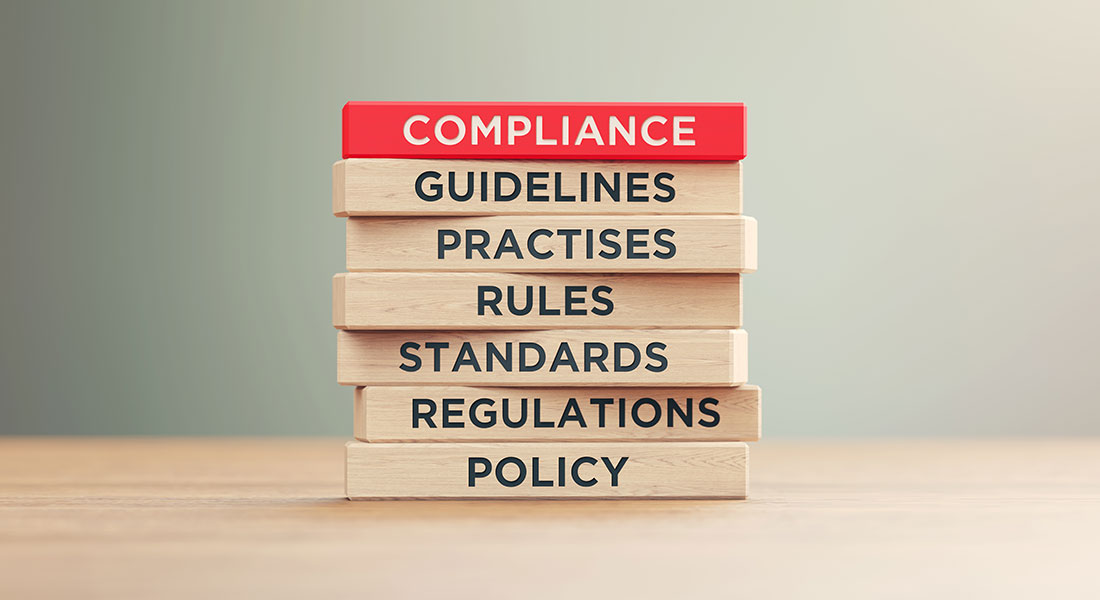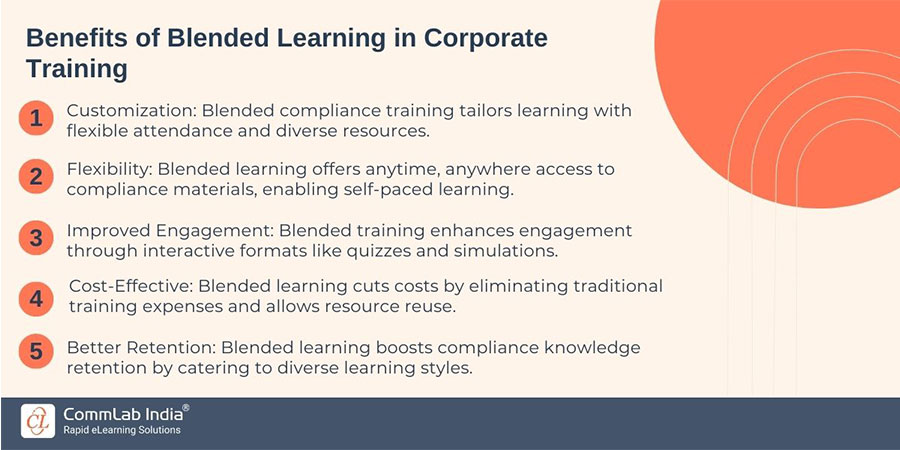10 Unique Tips for Blended Learning Solutions in Compliance Training

Compliance training, which ensures that employees are well-versed in regulations, policies, and ethical standards is not just a legal requirement but fundamental for building a responsible and efficient workforce. However, traditional compliance training methods can be complex, dry, and sleep-inducing! That's where blended learning solutions come to light.
Blended learning solutions, combining traditional and digital training methods, offer a dynamic approach to compliance training. In this blog post, we're going to show you 10 unique tips for mastering compliance with the power of blended learning.
What is Blended Learning?
Blended learning merges traditional classroom teaching with online tools, combining face-to-face instruction, virtual classrooms, eLearning platforms, and hands-on activities for a comprehensive and effective learning experience.
Why is Blended Learning Important for Compliance Training?
In recent years, there has been an increasing need for more engaging and interactive compliance training programs that go beyond the traditional lecture-style approach. This is where blended learning comes into play – by incorporating different mediums and techniques, it can enhance the effectiveness of compliance training in several ways:

10 Effective Tips to Enhance your Blended Learning Solutions
1. Personalize Learning Paths
Compliance training often involves diverse roles within an organization. Tailoring learning paths based on job roles ensures that employees receive relevant information. For example, finance teams may need in-depth financial compliance training, while customer service teams may require a focus on ethical customer interactions. Personalization enhances engagement and relevance.
Here are some tips on how you can create personalized learning paths in your compliance training program:
- Conduct a Training Needs Analysis (TNA): Identify knowledge and skill gaps to tailor training materials for individual needs.
- Use Pre-Assessments: Gather learner information before training to customize content, save time, and enhance engagement.
- Offer Multiple Learning Options: Cater to different learning styles with varied formats like videos, podcasts, interactive modules, or hands-on activities for an enjoyable and effective learning experience.
- Incorporate Real-Life Scenarios: Enhance engagement and relevance by integrating real-life scenarios into compliance training, connecting theoretical concepts to practical job roles.
2. Gamify Compliance Modules
Gamification injects an element of fun into compliance training, making it more engaging and memorable. Incorporate game-like elements such as quizzes, challenges, and leaderboards. By turning compliance modules into interactive games, you transform mandatory training into an enjoyable experience, motivating employees to actively participate.
Here's how to include gamification in your corporate eLearning courses:
3. Integrate Real-life Scenarios
Create realistic scenarios that employees might encounter in their roles. For compliance training, simulate situations where ethical decisions are crucial. By placing learners in real-life scenarios, they can practice making the right choices within a safe learning environment. This helps to bridge the gap between theory and practical application.
4. Utilize Microlearning Modules

Breaking down compliance content into bite-sized modules makes it more digestible for learners. Microlearning emphasizes short, focused sessions that cater to shorter attention spans. Consider creating brief modules that employees can easily consume during short breaks, promoting continuous learning without overwhelming them with information.
5. Foster Peer-to-Peer Learning
Encourage collaborative learning by incorporating peer-to-peer interactions. Establish discussion forums, group projects, or peer-reviewed assignments. This not only promotes knowledge sharing but also provides an avenue for employees to discuss compliance scenarios, share insights, and learn from each other's experiences.
→ Download Now: Is Blended Learning the Right Option for you? [Checklist]
6. Leverage AI for Adaptive Learning Paths
Harness the power of artificial intelligence to create adaptive learning paths. AI can analyze individual learning patterns and preferences, offering a personalized learning environment. This ensures that employees receive the right level of challenge and support, optimizing their learning experience based on their unique needs.
7. Implement Virtual Reality (VR) Simulations
For high-stakes compliance scenarios, VR simulations offer an immersive experience. Train employees to navigate challenging situations within a virtual environment. This hands-on approach allows them to practice decision-making in realistic settings, enhancing their ability to apply compliance principles in their day-to-day roles.
8. Incorporate Social Learning Platforms
Integrate social learning platforms where employees can share insights, ask questions, and discuss compliance topics. This fosters a sense of community and collective responsibility for compliance. Employees can learn not only from formal training materials but also from the experiences and perspectives shared by their colleagues.
1. Practical Insights: Social learning in compliance training enables the sharing of practical experiences, enhancing understanding.
2. Enhanced Retention: Collaborative discussions improve knowledge retention, ensuring better absorption of compliance information.
3. Engaging Scenarios: Social elements, like discussions on real-life scenarios, make compliance training more engaging and applicable.
4. Peer Accountability: Peers can reinforce compliance policies, fostering a culture of accountability within the organization.
5. Timely Updates: Social learning facilitates swift communication of regulatory changes, ensuring participants stay informed and compliant.
9. Provide Continuous Reinforcement
Compliance is an ongoing commitment, and continuous reinforcement is key. Implement spaced repetition techniques to reinforce critical information over time. Periodic quizzes, refresher courses, and regular updates on policy changes keep compliance knowledge fresh and accessible.
10. Measure Effectiveness with Analytics
Implement robust analytics tools to track the effectiveness of your blended learning program. Monitor completion rates, quiz scores, and engagement metrics. Analyzing this data provides insights into areas of improvement and helps refine your blended learning strategy for maximum impact.
Wrapping Up
In conclusion, adopting these ten unique tips for blended learning solutions in compliance training can transform mandatory training into a dynamic, engaging, and effective experience for employees. As the corporate landscape evolves, embracing innovative approaches to compliance ensures that organizations not only meet regulatory requirements but also foster a culture of continuous learning and ethical practices.
Still in doubt whether or not to use blended learning for your corporate training? Here's a questionnaire to clear your hesistance...




![The Roadmap for Implementing Learning Analytics [Infographic]](https://blog.commlabindia.com/hubfs/Imported_Blog_Media/learning-analytics-implementation-roadmap.jpg)
